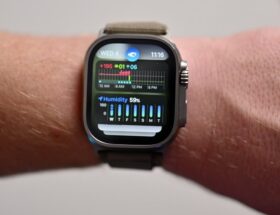Apple Vision Pro ZEISS optical inserts
 10 Facebook x .com Reddit
10 Facebook x .com Reddit
Apple is working to prevent users from having to add prescription lenses to their Apple Vision Pro because the headset itself adapts to different vision needs.
Apple Vision Pro can be used by people with a very large amount of — but not all — problems with visual impairment. So far this has to do with the selection and use of lenses or optical inserts.
This means you can't just order the Apple Vision Pro online and expect it to work for you. It's clearly in the best interests of both Apple and users to make purchasing Apple Vision Pro more convenient and make it work for more people.
Apple had considered using liquid lenses instead of glass and had been exploring adjustable lens systems even before the launch of Apple Vision Pro. A recently published patent application shows that this issue continues to be worked on in great detail.
The term “vision-corrected head-mounted display” broadly refers to “a sensor system that measures the characteristics of the user's eyes.” This system may include “a wavefront sensor, such as a Shack-Hartmann wavefront sensor, a Tscherning sensor, or a ray tracing sensor” that “can be used to measure refractive errors in the user's eyes, such as astigmatism, hyperopia, and myopia.” .”
Part of a patent application suggesting movable lenses to correct vision problems
The patent application states that refractive errors can be corrected by “adjusting lenses and/or display position adjustment.”
Much of the description is broad, since the application of the course is of course intended to cover as wide a range of possible applications and implementations of the idea as possible. But it also gives a lot of very specific examples that illustrate what Apple is trying to achieve.
“As an example, consider a nearsighted user with astigmatism whose right eye (OD) is prescribed at sphere: -3.00 diopters, cylinder: -1.50 diopters, axis: 180 degrees,” continues patent application. .
“This recipe indicates that the user needs spherical and cylindrical corrections of -3.00 and -1.5 diopters, respectively,” he continues. “An axis value of 180 indicates that the user's astigma correction is horizontal.”
Apple says that in this scenario, Apple Vision Pro can adjust the distance between the display and the user's eye using a “Z-axis positioner, and cylindrical correction can be achieved by adjusting the horizontally oriented tunable cylindrical lens.” to obtain a cylindrical lens power of -1.5 diopters.”
Patent fragment showing the Shack-Hartmann sensor
Apple applies for at least hundreds of patents every year, and is granted many of them. Just because something is proposed in a patent does not automatically mean that the product will ever be released.
However, the specific details of this patent application and the way it follows others in the same region indicate that Apple has at least put a lot of effort into solving this problem. So he may not be able to solve everything in time for the expected second Apple Vision Pro, perhaps in 2026, but it looks like he wants to do it.
This patent application belongs to 14 inventors. Many of them worked on an earlier patent application of the same name, and three, including Victoria Chan, were involved in a similar application filed in 2021.
Follow AppleInsider on Google News.









